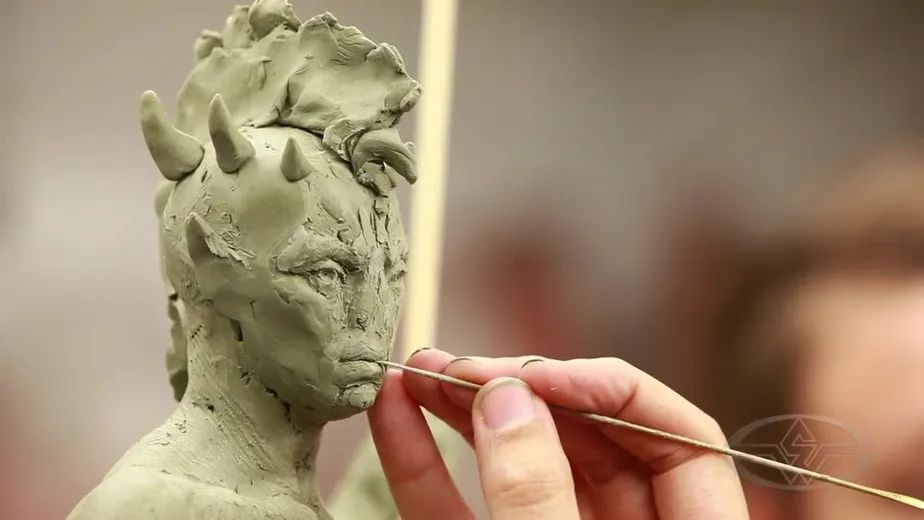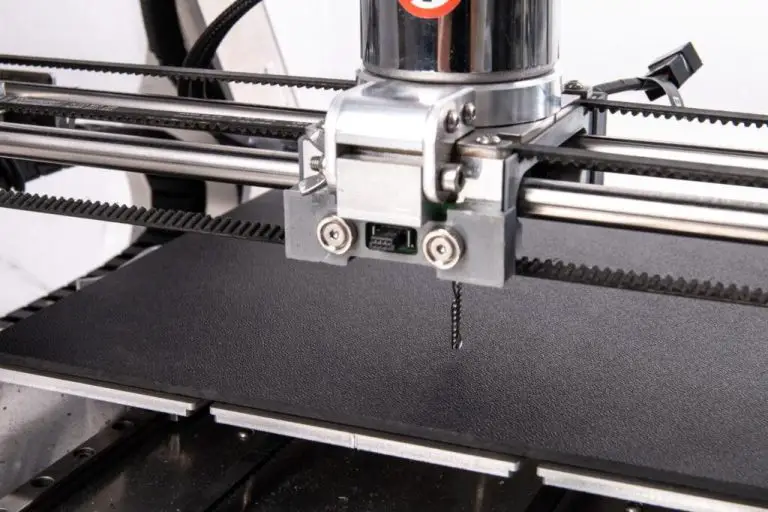Advanced Clay Sculpting: Refining Your Artistry
Clay sculpting is an ancient art form with evidence of clay pots, figures, and artwork dating back over 25,000 years. Clay Sculptures: Unearthing the Roots of an Ancient Art Form traces early clay art back to some of the earliest civilizations in places like Mesopotamia, Egypt, Greece, and China where figurines and vessels were shaped by hand or on a potter’s wheel. Despite its long history, clay remains a popular artistic medium today for creating both functional pottery and decorative sculptures due to its versatility, affordability, and capacity to be fired into durable terracotta or ceramic artworks.
Tools and Materials
To sculpt intricate clay creations and refine your artistry, having the right tools is essential. Some of the most useful sculpting tools include:
- Loop tools – For smoothing surfaces and blending edges. Various shapes like teardrops and spheres provide control.
- Spatulas – For sculpting fine details and textures. Flexible steel blades in different widths.
- Ribbon tools – For cutting, carving, and etching linear designs. Sturdy steel ribbons in varying thicknesses.
- Cutting wires – For slicing cleanly through the clay. Available in different gauges of thin, steel wire.
- Carving knives – For controlled removal of clay. Interchangeable blades provide precision.
Quality tools like those from DiamondCore Tools allow intricate designs to be sculpted into ceramic creations. The key is having an assortment that provides control and versatility.
Clay type is also an important consideration, as different clays have properties that affect the sculpting process. Oil-based clays like plasticine are excellent for sculpting fine details that won’t dry out. Polymer clays can be hardened after sculpting by baking. Traditional clays like earthenware and stoneware hold their shape while leather-hard, and can be fired after sculpting. Having an understanding of clay properties helps select the right type for your sculpting needs.
Techniques
To create advanced clay sculptures, it’s important to master key techniques like using armatures, texturing, and sculpting lifelike figures. Armatures, typically made from wire, wood, or other materials, provide essential interior support for clay sculptures (Clay Sculpture Techniques and Tips). Carefully applying clay over an armature allows sculptors to create figures with realistic poses and anatomy. Another essential technique is texturing the clay’s surface. Texturing creates visual interest and realism, whether sculpting skin, hair, clothing, or other textures. Techniques like marking the surface with tools, adding slip, and attaching bits of clay can create realistic textures (8 Must-Know Clay Modeling Techniques). Finally, carefully sculpting proportions, anatomy, and facial features allows artists to sculpt remarkably lifelike figures.
Attention to Detail
One of the key skills in advanced clay sculpting is mastering attention to detail. This involves taking the time and care to finely sculpt subtle elements that bring a piece to life. For realistic sculptures of people or animals, paying close attention to anatomy and proportion is crucial. Precisely forming the eyes, nose, mouth, hands, feet, muscles, bones, and other anatomical features conveys a sense of realism and believability.
Likewise, accurately sculpting clothing, hair, and accessories shows refinement. Carefully texturing surfaces like skin or fabric also enhances realism. Beyond anatomical precision, excellent attention to detail expresses emotion and personality. Subtly shaping the eyes, mouth, and brows to reflect a mood conveys the subject’s inner feelings. These nuanced details turn a technically accurate sculpture into an evocative work of art.
Achieving this level of meticulous refinement requires patience, focus, and a subtle sculpting touch. But the time invested in fine details can transform a sculpture from generic to exquisite. With practice and care, clay artists can bring their work to life in the smallest yet most significant ways.
As demonstrated in this YouTube video on adding details to a sculpture, taking the time to refine small facial features like smile lines and pores creates more realistic and emotive work: Adding Details To Your Sculpture

Practice and Studies
One of the best ways to refine your sculpting skills is through consistent practice and study. As with any art form, the more you sculpt, the better your technique and artistry will become. Here are some recommendations for effective practice:
Observational sketches and models are very helpful for studying human, animal, and natural forms. Quick gesture drawings and longer contour drawings allow you to analyze the shapes, proportions, and details you want to portray in clay. You can work from live models or photographs as references. Having strong foundational drawing skills transfers directly to your sculpture abilities, according to instructors at Design Swan.
Developing skill through repetition is another cornerstone of improvement. Doing studies of the same subject multiple times, while focusing on a particular technique, trains your hands and mind. For example, sculpting hands over and over will build muscle memory and give you a deeper understanding of structure and gesture. Approach each sculpture with intention and active learning. Analyze your work after each session to identify areas for refinement. Over time, your technical execution and artistic style will naturally evolve through diligent practice.
Finishing and Presentation
Properly finishing and presenting your clay sculptures is an important final step to showcase your artistry. After spending days or weeks sculpting and perfecting your work, you’ll want to make sure it is displayed at its full potential.
First, allow adequate drying time for your sculpture. Air drying clay sculptures should be allowed to dry for 24-48 hours before painting or sealing. Before firing clay sculptures, review the recommended drying times, but most clays need 1-2 weeks of drying before bisque firing. Rushing the drying risks cracking or exploding your work.
Next, follow the firing schedule and process for your type of clay. Make sure pieces are fully dry before firing to avoid cracking. Use kiln posts or stilts to avoid pieces sticking to the kiln shelf. For an attractive finish on sculpture surfaces, sand pieces using progressive grit sandpaper after bisque firing.
Seal sculptures before painting if needed for the type of clay. Acrylic paints work well for adding color. Use thin layers of paint and allow drying between coats. Clear finishes like polyurethane can be used to seal and protect painted sculptures. Allow full cure times before handling finished pieces.
For mounting sculptures, choose neutral colored bases or stands that don’t distract from the art. Consider spotlights or track lighting to showcase details. Avoid overcrowding pieces together. Use niches, shelves, pedestals or risers to give emphasis to important works. Rotate pieces periodically for a fresh look.
Proper finishing and presentation elevates your sculptures into true artworks worthy of display. Follow these tips, and you’ll be proud to show off your newfound clay sculpting skills. To learn more finishing techniques, check out this helpful guide: Clay Sculpture Techniques and Tips
Artistry and Style
Developing a unique artistic vision is an important part of becoming an advanced clay sculptor. This means cultivating your own aesthetic style and finding creative ways to express yourself through your work.
As you gain more experience, don’t be afraid to push boundaries and conventions within the medium of clay. For example, you could experiment with more avant-garde abstract sculptures, or blend multiple stylistic influences into a distinctive hybrid. The most innovative artists develop their own visual language over time.
Study art movements and sculptors who inspire you.absorb diverse influences while staying true to your creative instincts. Avoid simply emulating others’ work – aim to invent novel styles, subjects, textures, and forms. Your own inner vision should guide what you sculpt.
Technical skill alone does not make great art. Truly advanced sculptors marry excellent craft with imagination and meaningful concepts. Let the process of working with clay open your mind to new ways of thinking and seeing.stay open-minded, and never stop exploring your own creative potential.
As you refine your artistry, reflect on the key themes, feelings, or ideas you want your work to evoke. Develop a cohesive style that visually communicates your artistic perspective. Experiment fearlessly to find the clay techniques best suited to your vision. With dedication to perfecting both your craft and your creative voice, you can achieve great heights of expression through your sculpture.
Case Studies
Some of the most renowned clay sculptors include artists like Edmund de Waal, Betty Woodman, Grayson Perry, and Magdalene Odundo. Their creations in clay demonstrate incredible technical skill and artistic vision.
De Waal’s ceramic installations have been displayed in major museums worldwide. His work often explores family histories and migration through minimalist porcelain vessels. For example, his installation signs & wonders featured over 2,000 handmade porcelain pots suspended in a rhythmic pattern.
Betty Woodman was known for her colorful, exuberant ceramic sculptures that blended decoration and utility. Many of her pieces fused paintings and drawings directly into the clay surfaces. She won numerous awards over her career, including the first woman to receive the Outstanding Artist Award from the International Sculpture Center.
Some particularly notable clay sculptures include Grayson Perry’s vase For Faith, which sold for over $60,000 at auction in 2004. Magdalene Odundo has also created remarkable pieces like Sage and Time which exemplify her mastery of coil-built ceramics.
Business Considerations
If you want to turn your sculpting passion into a business, there are some important factors to consider. First, you’ll need to develop a marketing and sales strategy to get your sculptures in front of potential buyers. Some options include selling at art fairs and craft shows, approaching local galleries or gift shops, or setting up an online shop to sell directly to customers. Make sure to take high-quality photos of your pieces and create an appealing online presence through a website, social media, and email marketing campaigns.
Another potential business opportunity is teaching clay sculpting skills. You could offer group or private lessons, either in-person at a studio or virtually. Developing a curriculum, establishing pricing, and promoting your classes would all be part of building this side of your business. Teaching allows you to share your sculpting knowledge while also earning income through class fees. Consider partnering with local art centers, schools, or community education programs to offer classes through their facilities.1
No matter what sculpting business you pursue, be sure to handle all the legal and financial aspects properly. Register your business, obtain any required licenses or permits, maintain careful financial records, and consult an accountant about the best business structure and tax implications. With careful planning and persistence, you can turn your artistic passion into a fulfilling and financially sustainable career. 2
Conclusion
Clay sculpting is a rewarding and enriching art pursuit that allows you to express your creative vision. As you continually refine your skills and techniques, you’ll find immense satisfaction in improving your craft. The sense of accomplishment from creating a beautiful sculpture out of a simple lump of clay is unmatched.
Your sculpting will reach new heights as you devote more time to deliberate practice. As you familiarize yourself with the unique qualities of clay, you’ll gain an intuitive understanding of how to bring your artwork to life. With an openness to experimentation and learning from failures, your skills will blossom.
Immerse yourself in the world of sculpting – take classes, go to museums, join communities of artists. Surround yourself with people who will critique your work and push you to get better. The joy of sculpting comes not just from the finished product, but from the journey of enhancing your abilities over a lifetime.

